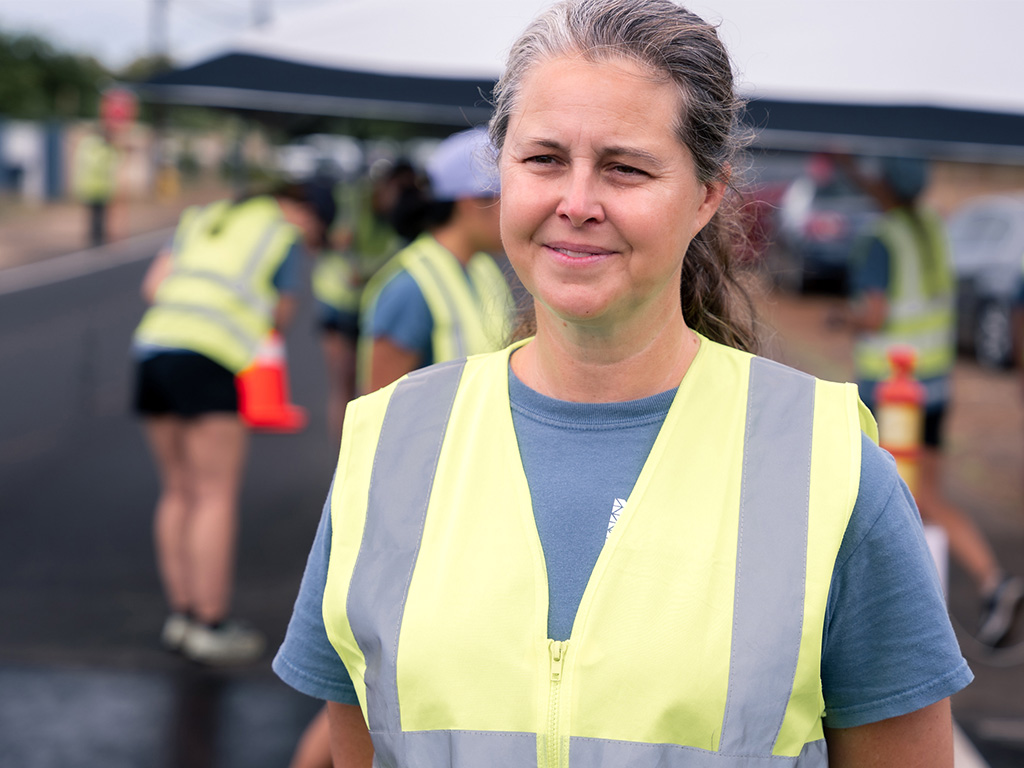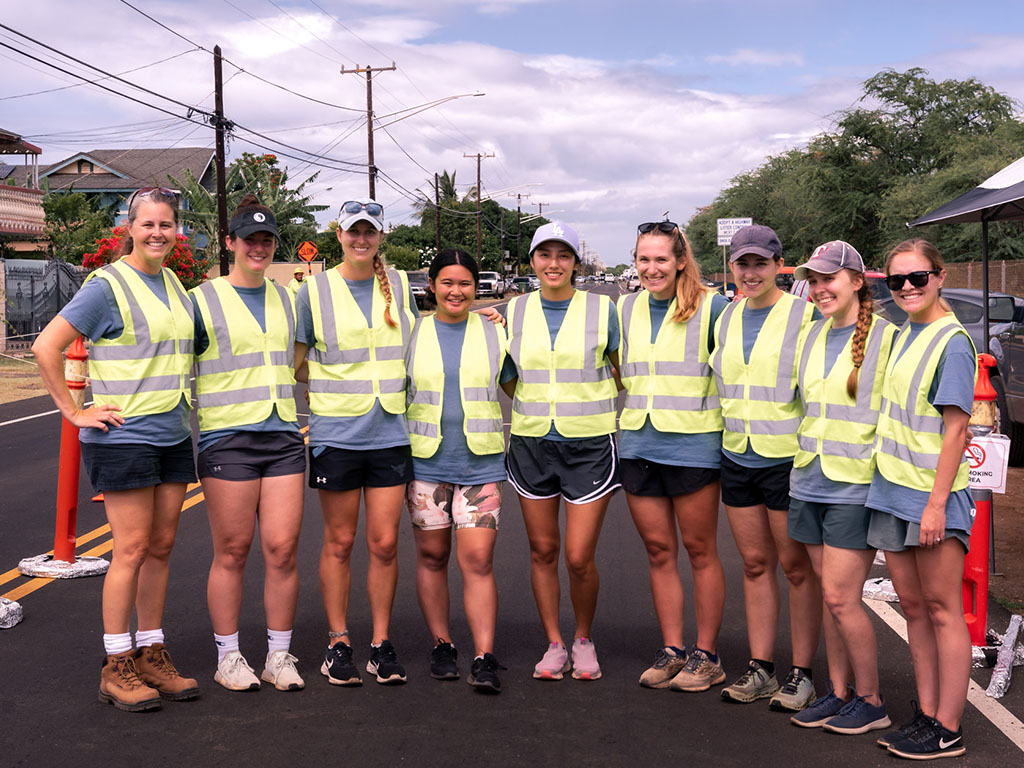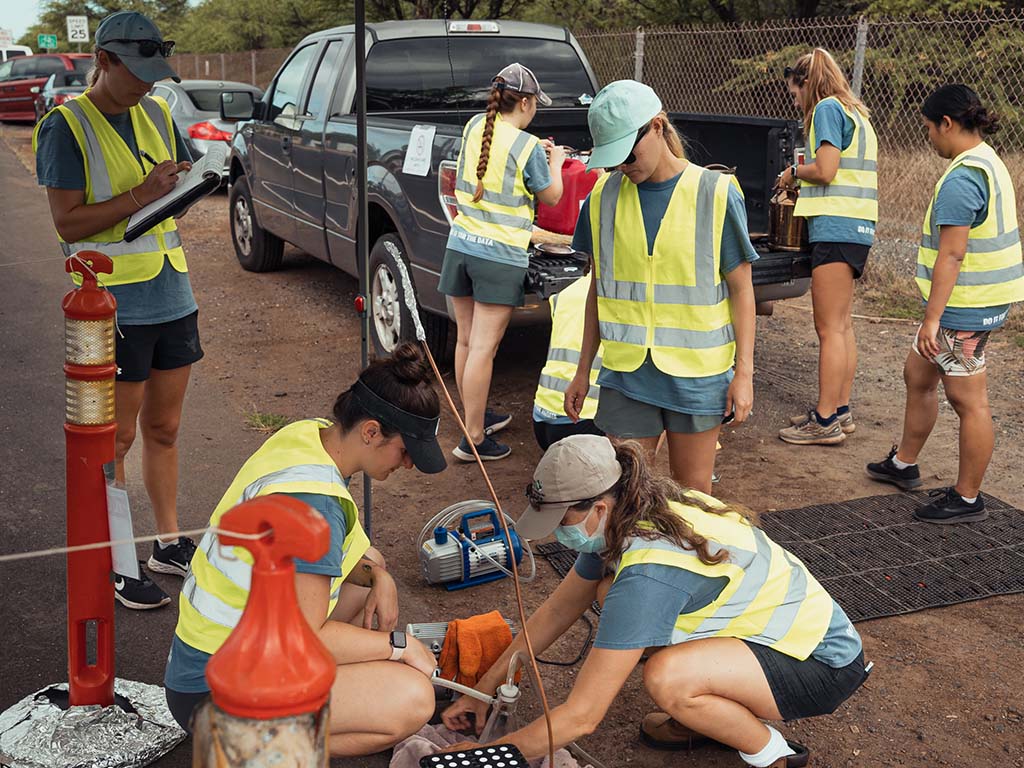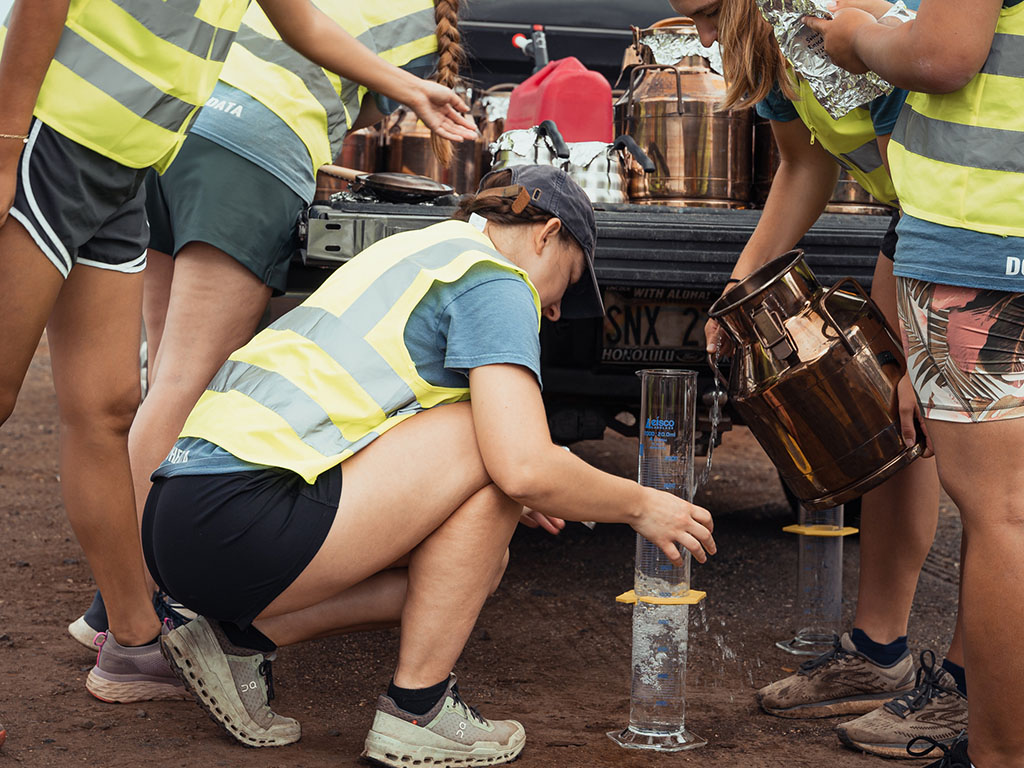HPU has taken the next step in a multi-year collaborative Plastic Road project in Hawai‘i that is led and funded by the Hawai’i Department of Transportation (HDOT). HPU research scientists and students simulated rainfall on Hawai‘i’s first-ever plastic road. The so-called stormwater runoff was collected to determine if microplastics and/or synthetic chemicals may leach from the road’s pavement.
HDOT piloted the plastic road paving project last October in Ewa Beach. The sample collection of rainwater runoff gathered from the road will take several months to analyze. A total of 1,950 tons of modified asphalt was used in the plastic road project, the equivalent of 195,000 plastic bottles.
Jennifer Lynch, Ph.D., the co-director of the HPU Center for Marine Debris Research (CMDR) is leading the portion of the research addressing microplastic and plastic additive leaching from the pavement.

Jennifer Lynch. Image By Michael Matsushita
“Nine students and staff from CMDR are working together like a pit crew to collect and analyze the water for this monumental trial of recycling plastic waste into Hawai‘i’s roads,” said Lynch. “Today is progress toward a very large research project in collaboration with the state and University of Hawai‘i. The stretch of road we have sampled is the first road paved with recycled plastics in Hawai‘i, so it is important that we understand if the pavement leaches environmental pollutants.”
The plastic road project has been driven on extensively for nine months. The road is divided into three seamless sections. The middle segment is the control area; the first and last segments of the road include the recycled plastics. The road looks and feels the same as any other asphalt road in Hawai‘i.
At CMDR, Lynch is currently leading several projects aimed at mitigating the harmful effects of plastic pollution on marine life. These include coordinating the removal and recycling of 200 tons of derelict fishing gear, or "ghost nets" from the entire Hawaiian archipelago, investigating the chemical, physical, and biological changes that occur during the weathering of plastic pollution, developing methods to measure micro and nanoplastics in the environment, and quantifying the amount of plastic ingested by sea birds, sea turtles, and fish. Through these initiatives, Lynch and her team are working to create a cleaner and safer ocean for all.
To learn more about CMDR at HPU, click here.





